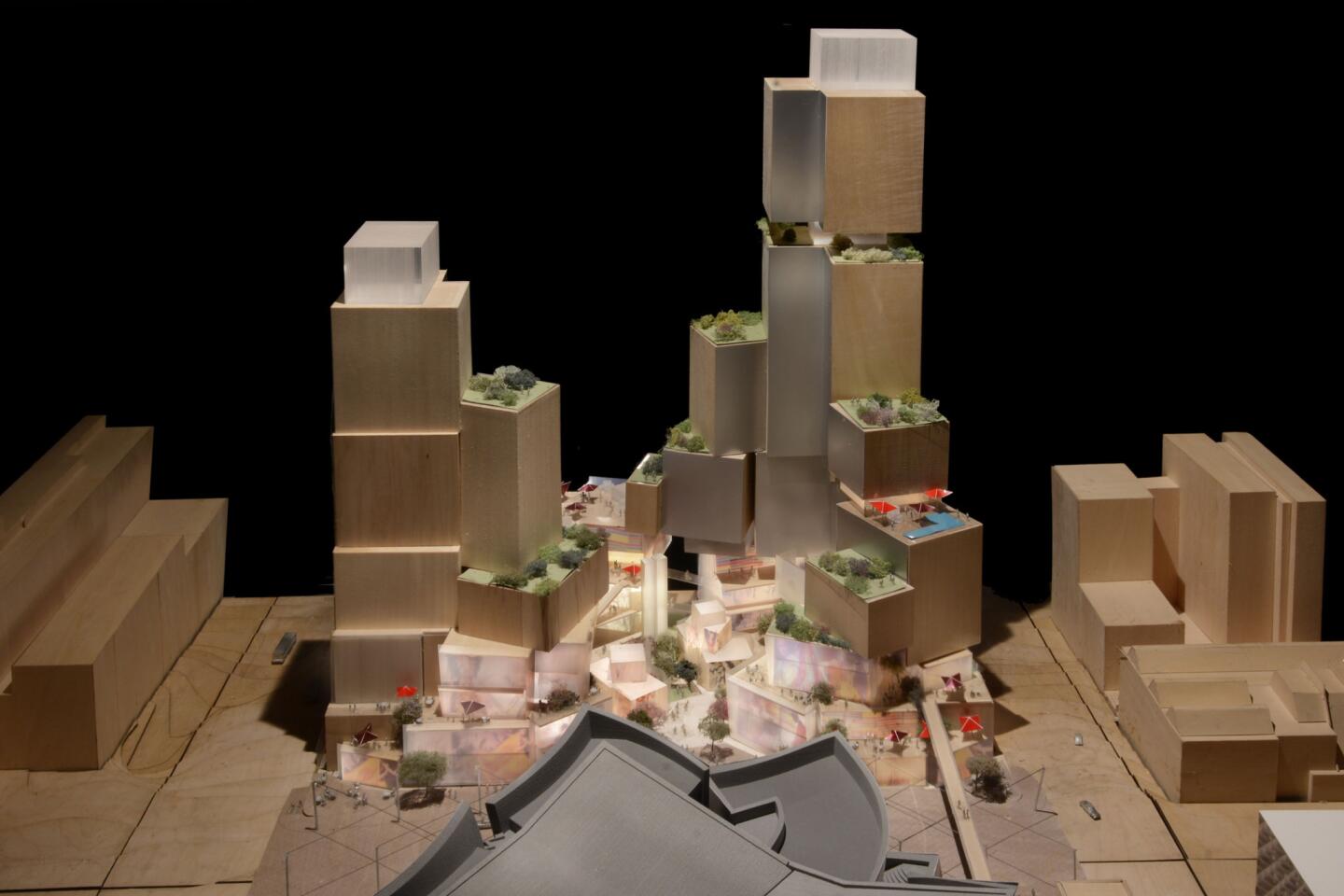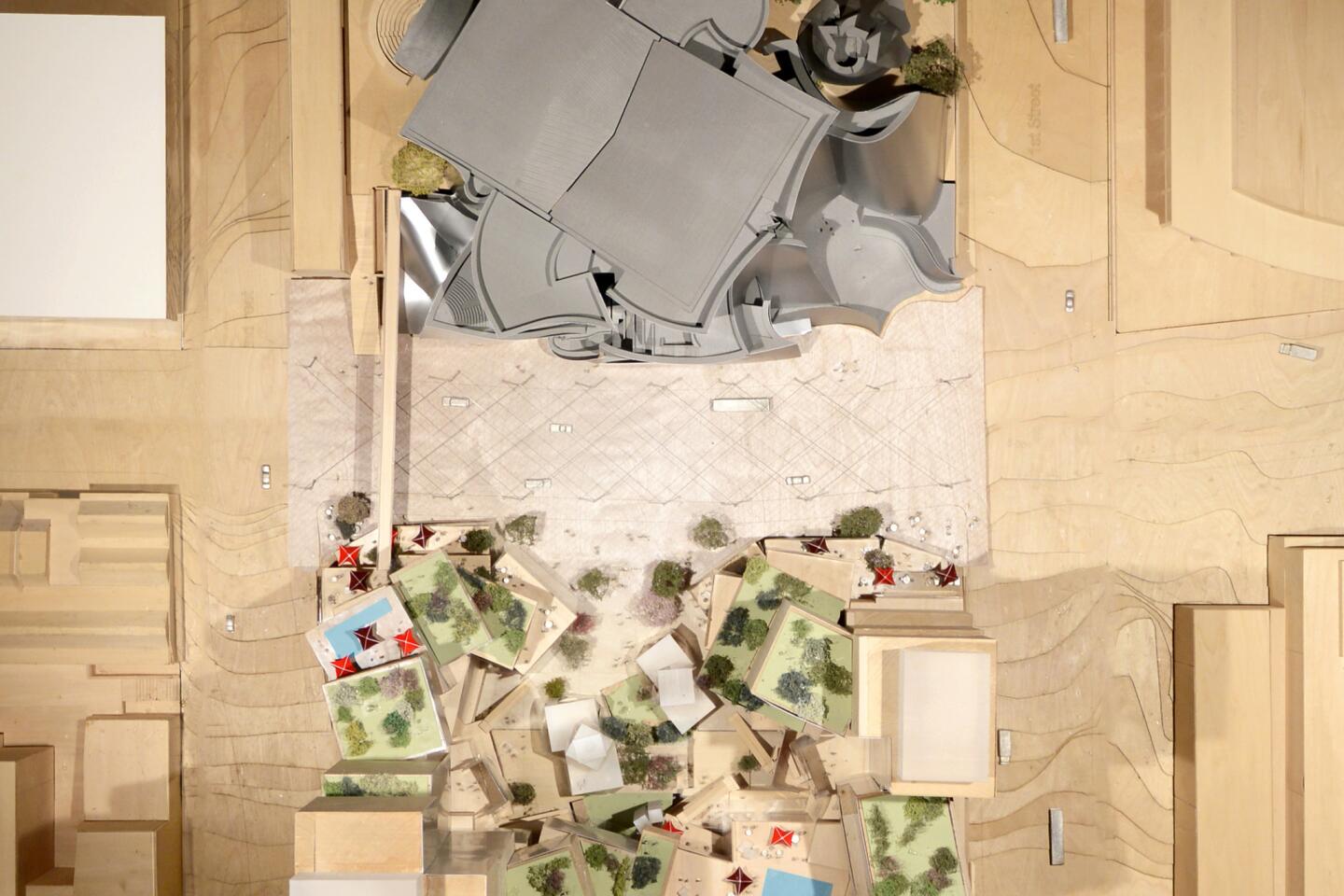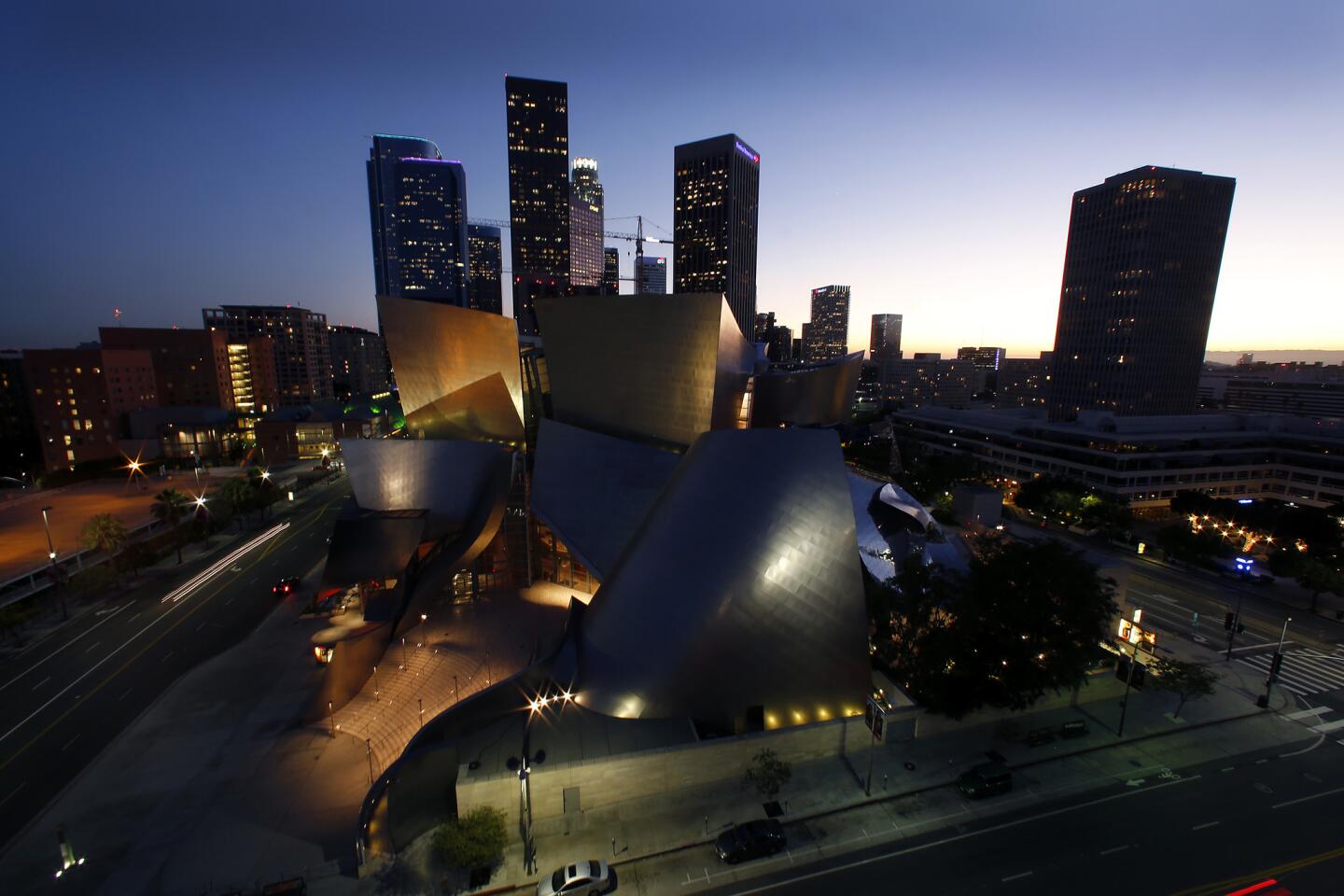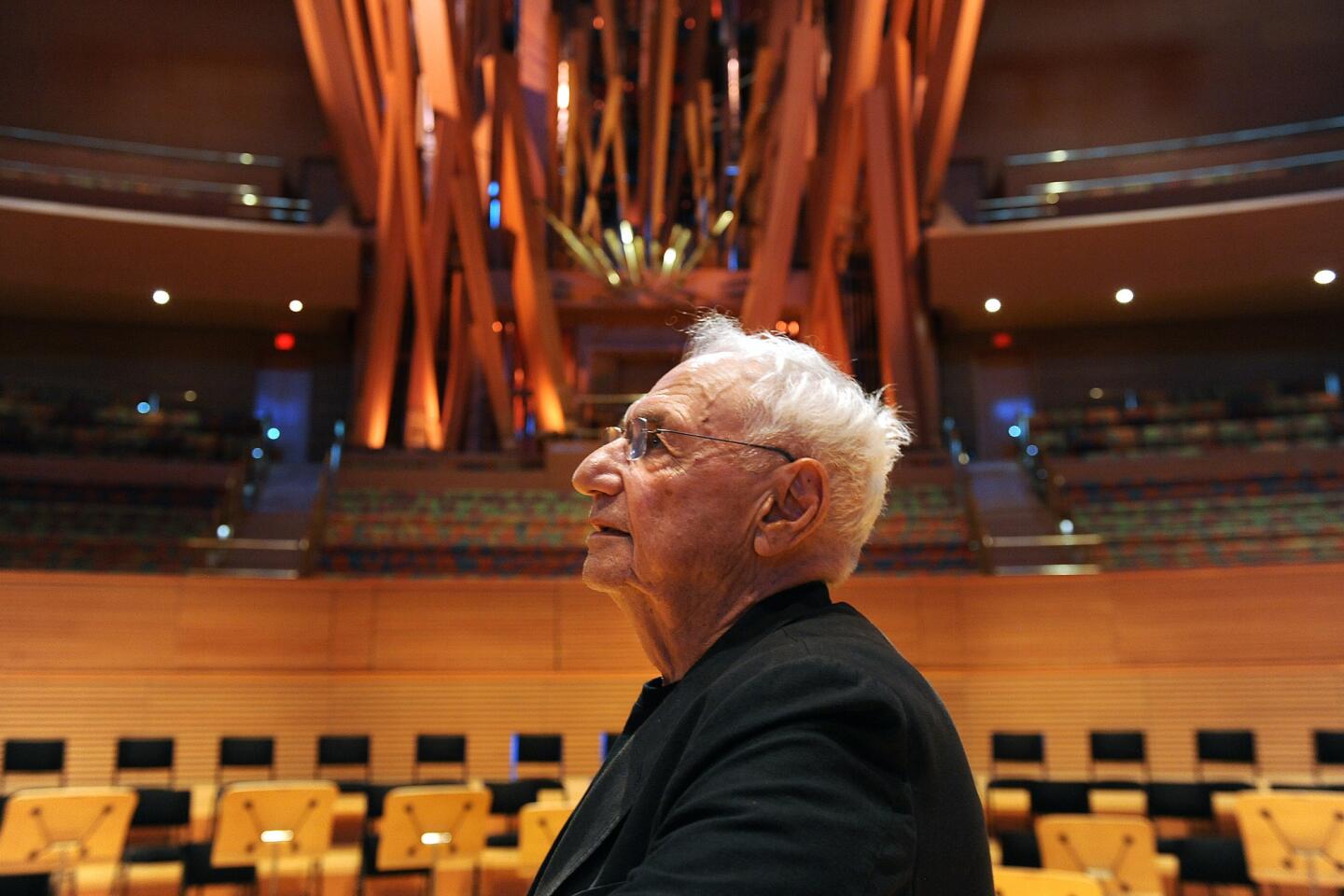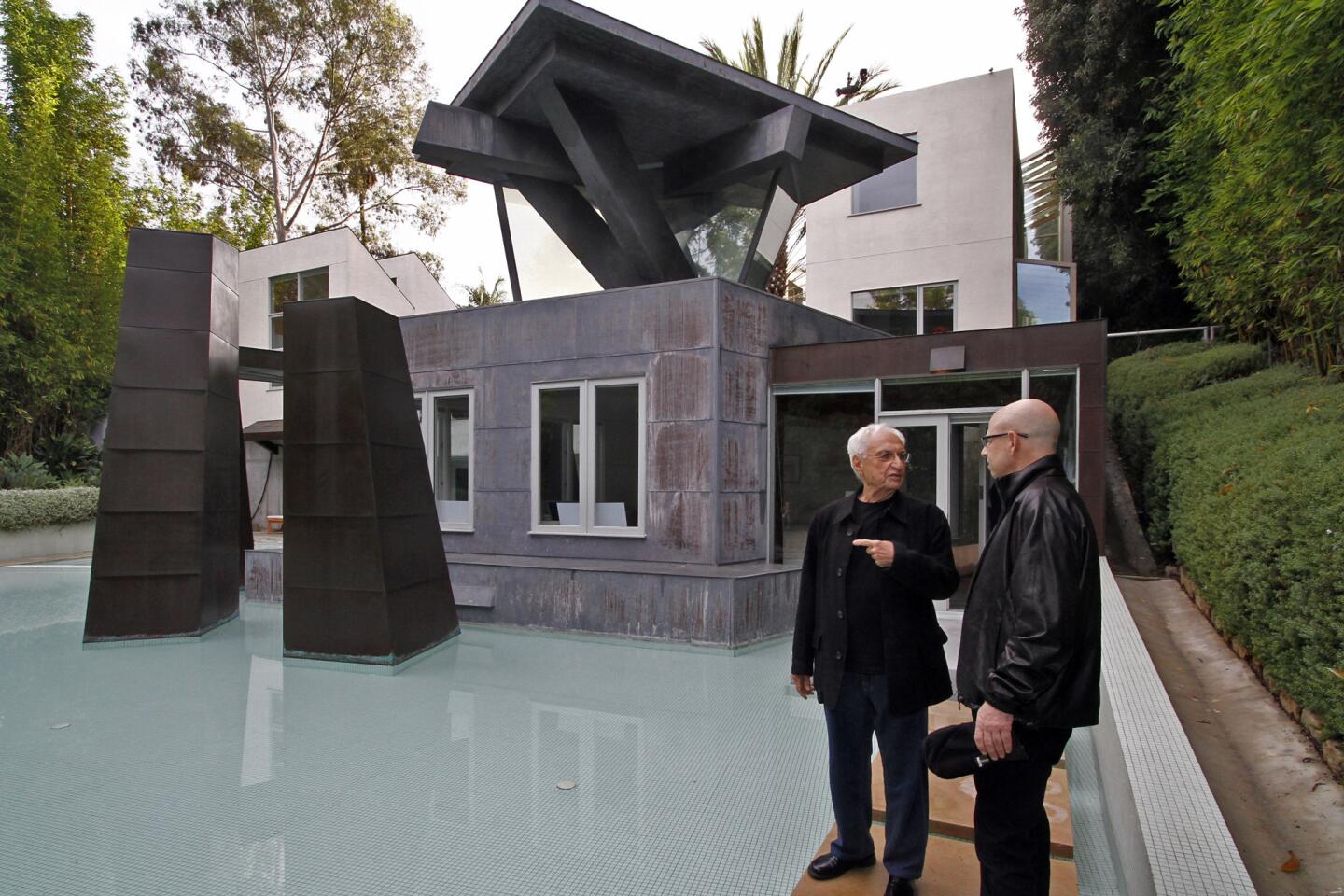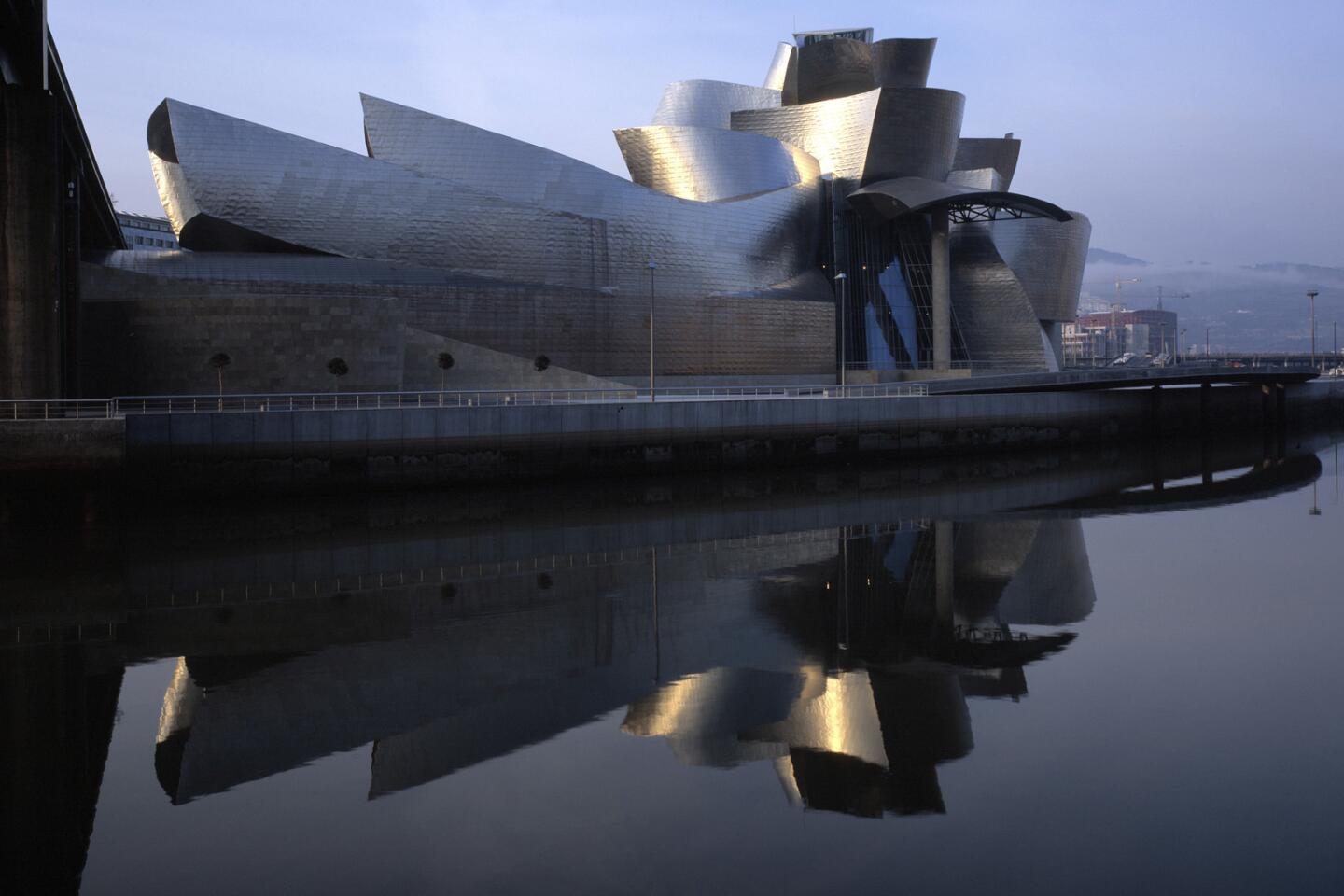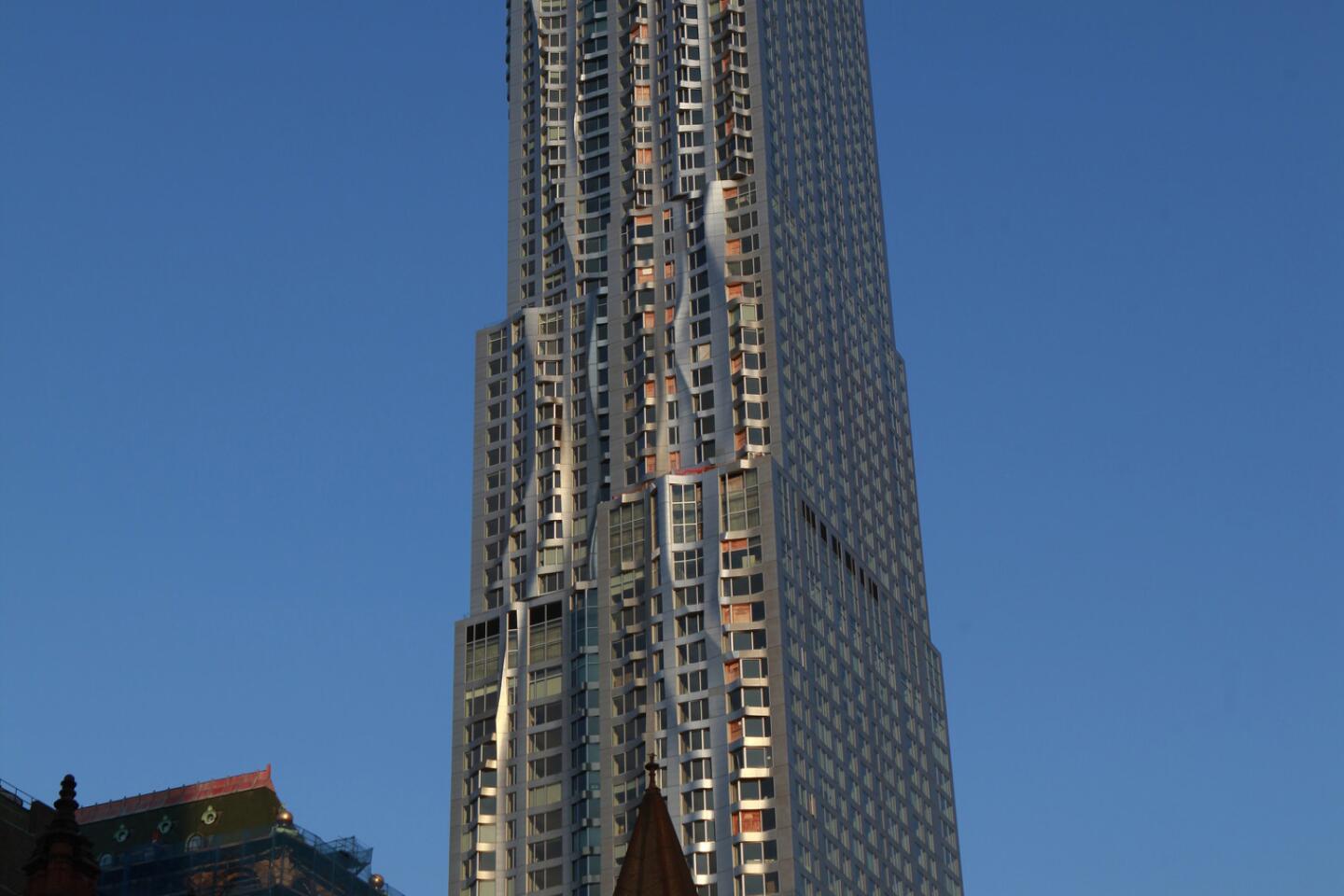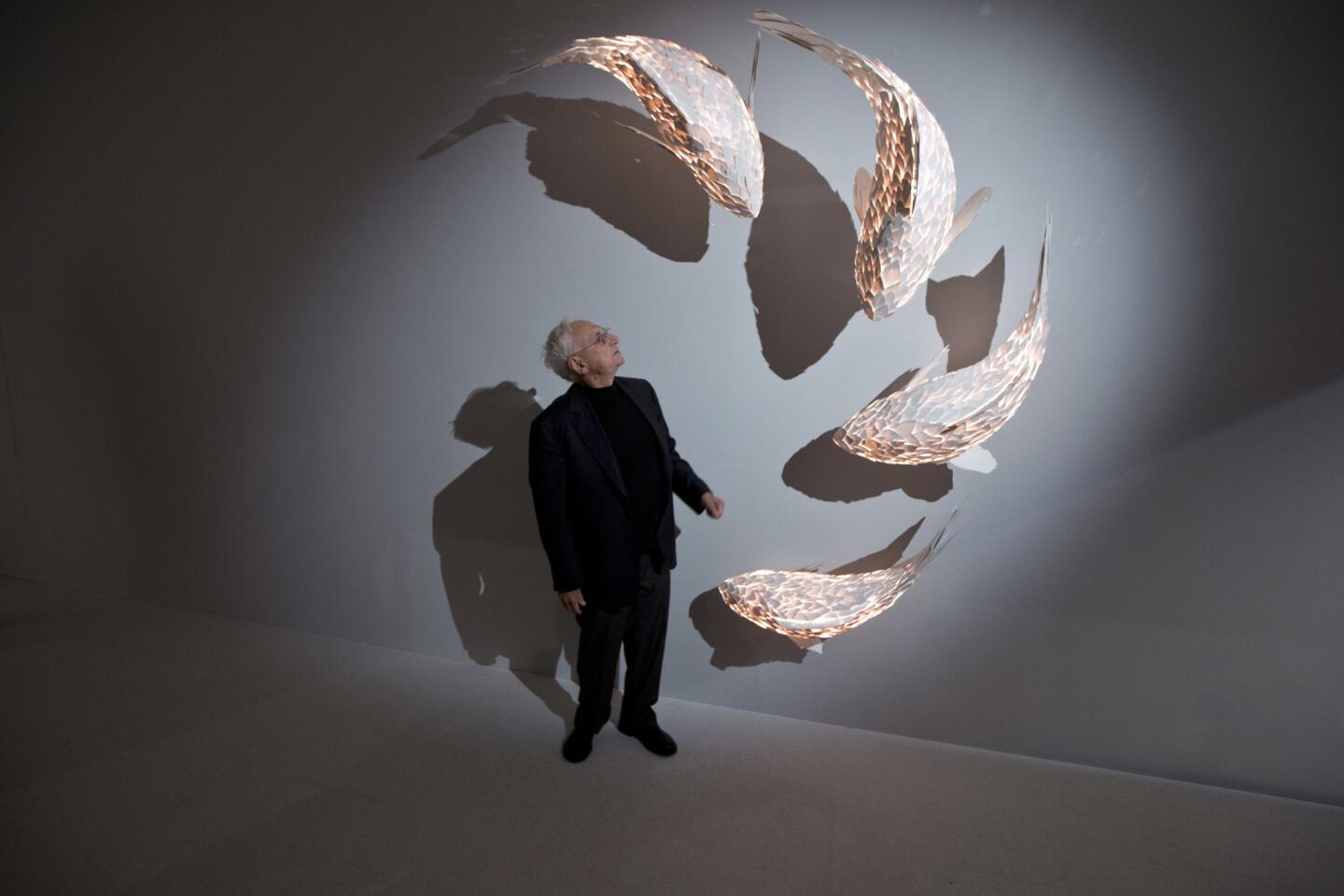Frank Gehry’s Grand vision to go before project committee
- Share via
Frank Gehry and Related Cos. have kissed and made up. Now we’ll see if city and county officials bless the reconciliation.
After soliciting plans from other architects in recent months, Related has put Gehry back in charge of the design team for a $650-million retail, hotel and residential complex on Grand Avenue in downtown Los Angeles. On Monday the New York-based developer will submit a new proposal by Gehry’s firm to the committee overseeing the project.
Gehry’s design is significantly more exuberant and suggestive of L.A. culture than designs for the site by the firms Gensler and Robert A.M. Stern Architects, which Los Angeles County Supervisor Gloria Molina, chair of the committee, blasted in September as bland and uninspired. It calls for a stacked collection of shops and restaurants forming a U-shaped plaza directly across from Walt Disney Concert Hall.
RELATED: A tour of L.A. boulevards | Christopher Hawthorne
The development will be crowned by a pair of towers, one holding a 300-room SLS Hotel and the other filled with condominiums and rental apartments. A series of terraces, restaurant patios and pool decks, many of them generously landscaped, cascades down along Grand facing the concert hall.
Related now hopes to build the project in a single phase rather than constructing the residential tower first. Construction is pegged to begin in 2015 and finish by 2019.
The new version is simpler and more efficient than Gehry’s original scheme for the site, which first surfaced in 2006. Boxy towers step up from a jumble of forms at ground level, replacing the wavier, more fluid forms of the earlier design. The residential building, the taller of the two towers, includes an open-air garden serving as a sky lobby for the condos on its top floors.
Though the towers remain works in progress, the proposal is better developed at street level than in any of the previous designs. The plaza facing Disney Hall is more open and confidently resolved in its design than before.
A generous connection through the project down to Olive Street — a crucial element in the project’s links to the base of Bunker Hill and the rest of a revived downtown — would allow pedestrians along Olive to look up through the complex, as if through a picture window, and see Disney Hall.
FULL COVERAGE: Walt Disney Concert Hall at 10
Gehry has toyed with the idea of a narrow pedestrian bridge leading from the apartment tower, near 2nd Street and Grand, across to Disney Hall’s upper-level garden.
In addition, he is in the early stages of work with the Los Angeles Philharmonic to redesign the concert hall’s lobby and ground-level spaces along Grand Avenue. The result may be to move the Disney Hall gift shop inside the hall and bring its cafe, now buried deep inside the building, out to Grand.
In a new twist, Gehry says he hopes to redesign the paving pattern of Grand Avenue itself between 1st and 2nd streets and string lights above the street between the concert hall and the new complex.
The extra attention to the Grand Avenue streetscape in the new plan is welcome but also carries a few risks. The last thing pedestrians on Grand or concertgoers coming out of Disney Hall want is a sense that the street design itself is funneling them straight into an open-air shopping mall.
In general, however, the new design is more open to Bunker Hill and downtown than earlier versions. It relates more subtly not just to Disney Hall but also to Eli Broad’s forthcoming art museum, the Broad, at 2nd and Grand.
PHOTOS: ‘Never Built’ buildings and their real-life counterparts
To a fascinating degree it is precisely Gehry’s energetic and unfussy aesthetic, which can appear chaotic at first glance, that makes these new urban connections possible. The jumble of patios, restaurant terraces and pool decks along Grand pivots slightly but strategically at each level, allowing some portions of the development to face the Broad while others offer direct views of Dorothy Chandler Pavilion or Disney Hall itself.
Still, Gehry has work to do to unify this collection of stacked forms. In general his most impressive designs — not just Disney Hall and the Guggenheim Museum in Bilbao, Spain, but also the Weisman Art Museum in Minneapolis and the Fisher Center for the Performing Arts at Bard College — succeed because they balance the architect’s exuberant form-making and ad-hoc sensibility with a largely monochromatic skin.
At Seattle’s Experience Music Project and MIT’s Stata Center, by contrast, the complexity of the forms has been pushed near visual incoherence by a jumble of shapes, scales, colors and materials. The danger on Bunker Hill is a similarly discordant pile of textures and finishes. Using hanging gardens and other landscape architecture elements to unify the design may be one way to avoid this fate.
Part of the proposal’s improved urbanism can also be traced to the plan Gensler developed for the site this year, which swapped the positions of the two towers in Gehry’s earliest design. In his updated plan Gehry has endorsed the change suggested by Gensler, which puts the hotel at 1st and Grand, at the corner nearest the Music Center, and the residential tower at 2nd and Olive.
The new tower locations should both help activate the intersection of 1st and Grand and improve the sense of connection between the new complex and the Broad, the Colburn School of Music and the Museum of Contemporary Art. By pushing the apartment tower over to 2nd and then down the hill toward Broadway, the new design pivots noticeably and generously to the south.
VIDEO: Frank Gehry and others on the Walt Disney Hall
The updated design clearly endorses the intersection of 2nd and Grand — anchored by Colburn, the Broad, Disney Hall and the new Related complex — as the new cultural heart of Bunker Hill.
The hotel may include a flexible, black-box theater and auditorium space, at 1st and Olive, that would serve as a nightclub two or three nights a week as a venue for chamber music and other performances on other evenings.
Updating an idea that goes back to the earliest plans for Disney Hall, Gehry hopes that the images of concerts inside the Disney Hall auditorium can be projected from the Related complex onto the Grand Avenue facade of the hall.
Perhaps the most intriguing wrinkle in the design is how it relates to the architectural form and character of Disney Hall. From the earliest stages Gehry has cast the new construction as something of a foil to his concert hall.
Where Disney Hall sits in the middle of its full-block site, radiating energy outward, the new complex would put its buildings along the perimeter, wrapping around an interior plaza and collecting or mediating that energy.
In this version those ideas are strengthened and clarified. There is now a sense that the plaza will be shaped as a reflection or negative version of Disney Hall itself, as if the Related development were a quarry out of which the shiny, jewel-like concert hall had been plucked.
christopher.hawthorne@latimes.com
More to Read
The biggest entertainment stories
Get our big stories about Hollywood, film, television, music, arts, culture and more right in your inbox as soon as they publish.
You may occasionally receive promotional content from the Los Angeles Times.
